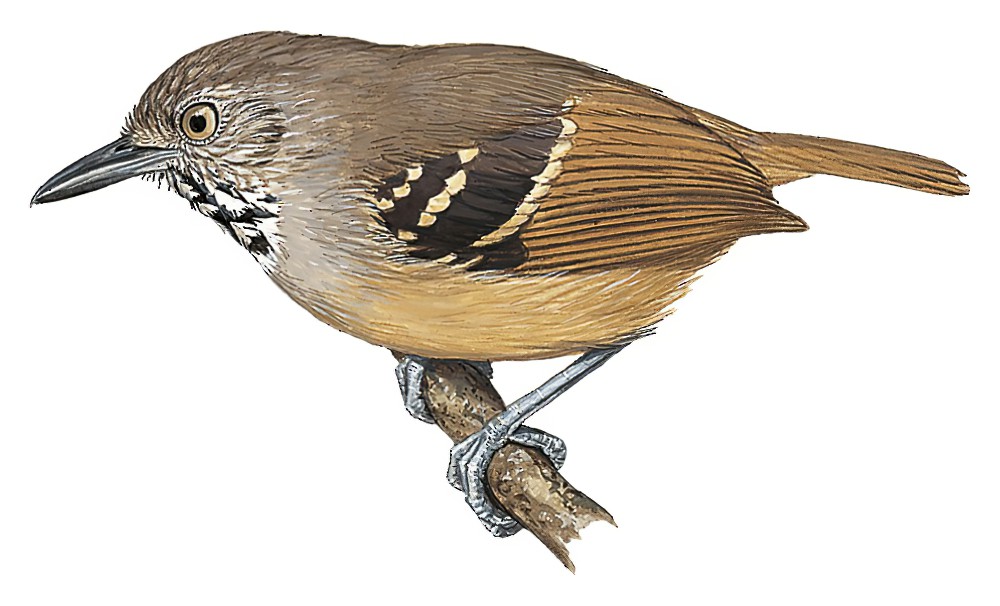Checker-throated Stipplethroat / Epinecrophylla fulviventris

Checker-throated Stipplethroat
SCI Name:
Protonym: Myrmetherula fulviventris Ann.Lyc.Nat.Hist.N.Y. 7 p.468
Taxonomy: Passeriformes / Thamnophilidae / Epinecrophylla
Taxonomy Code: chtant1
Type Locality: line of Panama Railroad, type from Lion Hill, Panama.
Author: Lawrence
Publish Year: 1862
IUCN Status: Least Concern
DEFINITIONS
EPINECROPHYLLA
(Thamnophilidae; † Stipple-throated Antwren E. haematonota) Gr. επι epi on; νεκρος nekros dead; φυλλον phullon leaf; "Epinecrophylla M. L. Isler & Brumfield, new genus. Type species. - Formicivora haematonota Sclater, 1857. ... The distinctive foraging specialization of Epinecrophylla species further supports their placement in a distinctive genus. Etymology.—The feminine generic name is taken from the Greek epi (on), necro (dead) and phyllo (leaf), meaning "on the dead leaf," reflecting the strong predeliction of members of the genus to search for insects on dead hanging leaves. ... The following species ... are included in the genus: Epinecrophylla fulviventris ... Epinecrophylla gutturalis ... Epinecrophylla leucophthalma ... Epinecrophylla haematonota ... Epinecrophylla fjeldsaai ... Epinecrophylla spodionota ... Epinecrophylla ornata ... Epinecrophylla erythrura" (M. L. Isler et al. 2006); "Epinecrophylla M. L. Isler and Brumfield in M. L. Isler, Lacerda, P. Isler, Hackett, Rosenberg and Brumfield, 2006, Proc. Biological Soc. Washington, 119 (4), p. 523." (JAJ 2021). It has recently been suggested that the birds in this genus be given the substantive name Stipplethroat (e.g. Rufous-backed Stipplethroat E. haematonota).
fulviventer / fulviventre / fulviventris
L. fulvus tawny; venter, ventris belly.
UPPERCASE: current genus
Uppercase first letter: generic synonym
● and ● See: generic homonyms
lowercase: species and subspecies
●: early names, variants, mispellings
‡: extinct
†: type species
Gr.: ancient Greek
L.: Latin
<: derived from
syn: synonym of
/: separates historical and modern geographic names
ex: based on
TL: type locality
OD: original diagnosis (genus) or original description (species)












